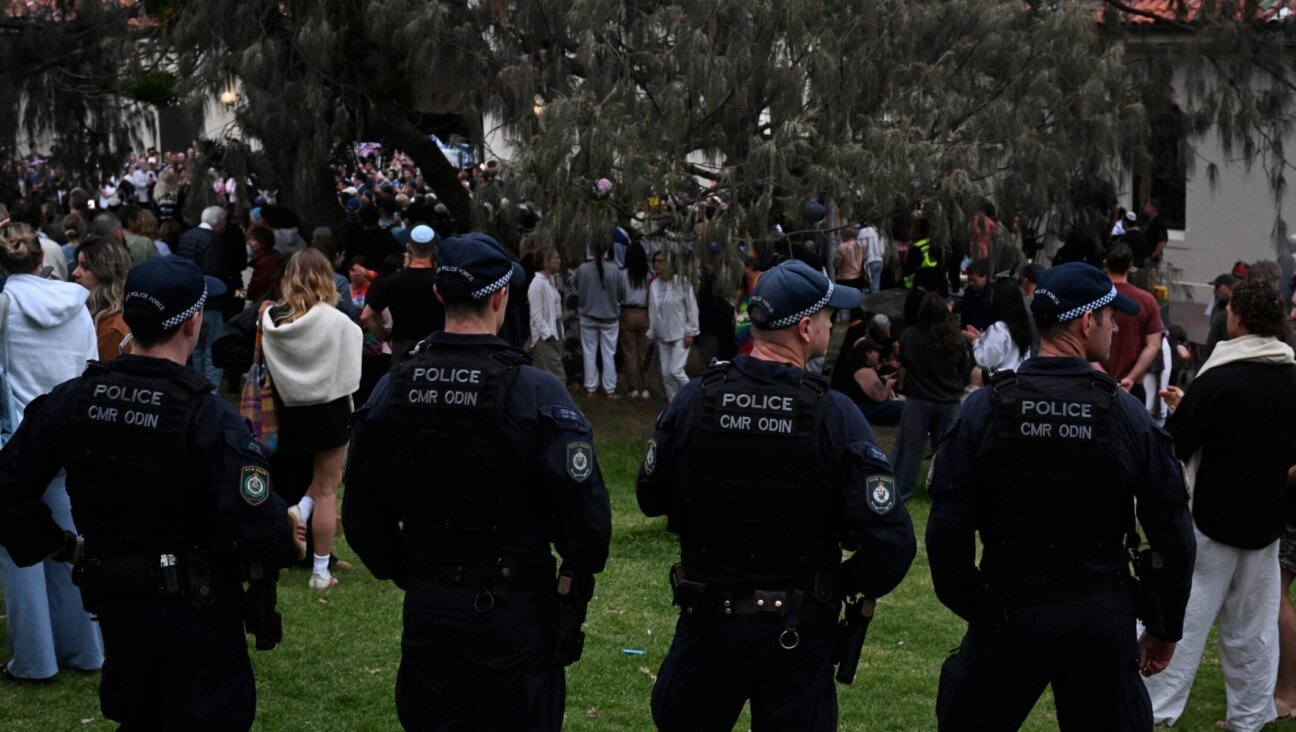100 Years of the ‘Joint’

Graphic by Angelie Zaslavsky
“I live. Send help.”
With that hopeful but heartbreaking dispatch, a survivor named Luba Mizne implored the American Jewish Joint Distribution Committee for rescue amid the devastation of 1945 Warsaw.
Now, her original telegram is one of more than 100 artifacts in “I Live. Send Help,” a moving exhibition at the New York Historical Society that marks the centennial of the JDC, which calls itself “the world’s leading Jewish humanitarian organization” and today operates in more than 70 countries.
The exhibition pulls from the JDC’s massive archives, which includes three miles of documents, more than 100,000 photos, and hundreds of items. An astonishing range of objects, from a bar of soap given to Bergen-Belsen survivors at a DP camp to a child’s dress distributed at Ellis Island in 1949 to a letter urging passage for a rescue caravan out of Sarajevo in 1992, makes the show much more than an academic exercise.
“Our archive is one of the most important repositories of modern Jewish history in the world,” said Linda Levi, the director of the JDC’s global archives and a curator of the exhibition. “Given the significance of our work over the last century, it seemed fitting to have an exhibition at a major institution.”
Sharing a floor with exhibitions on fashion photography and basketball, the exhibition makes a slightly incongruous addition to the NYHS’s summer lineup. But the exhibition fits neatly with the museum’s mission, according to Marilyn Kushner, curator and head of the NYHS’s department of prints, photographs, and architectural collections.
“We do history, and we do New York. This show has both,” she told the Forward. “The Joint personifies what we see as pure New York — people who see things that are insurmountable, but get them done.”
The JDC’s New York roots are evident in the exhibition’s oldest display: A 1914 telegram from Henry Morgenthau, then U.S. ambassador to the Ottoman Empire, to New York-based banker Jacob Schiff, seeking aid for Palestinian Jews. “Fifty thousand dollars needed… to establish loan institute and support families whose breadwinners have entered army,” reads the yellowed Western Union Cablegram. That missive led to the organization’s founding the same year.
From there, “I Live. Send Help” wanders the globe and the decades. A pocket-sized 1930s pushke, or charity box, encourages American donors to save up dimes for the JDC. A 1940 letter from Albert Einstein implores nations around the world to accept more Jewish refugees. And a nine-minute film of the “St. Louis episode” in 1939 shares the excruciating story of Jewish refugees who died in the Holocaust after their rescue ship was refused entry by both Cuba and the U.S. “These films are really treasures,” Levi said.
Today, the organization is as active in hotspots like Ukraine, the Philippines and Haiti as it was in war-ravaged Europe 70 years ago; though focused on rebuilding a Jewish presence across the former Soviet Union, its work touches Jews and non-Jews alike.
The exhibition also drives home the epochal shifts in communication, and how they’ve changed the nature of humanitarian work — from telegrams, letters and postcards of the last century to the Tweets, posts and messaging of ours. “Back then, it was a massive challenge to get news out about humanitarian situations,” Levi said. “We can respond much more quickly and easily now.”
The exhibition has also inspired a 160-page companion photo book, “I Live. Send Help,” with a prologue by Latvian-born author David Bezmozgis, whose émigré family got help from the JDC when they settled in Canada.
















